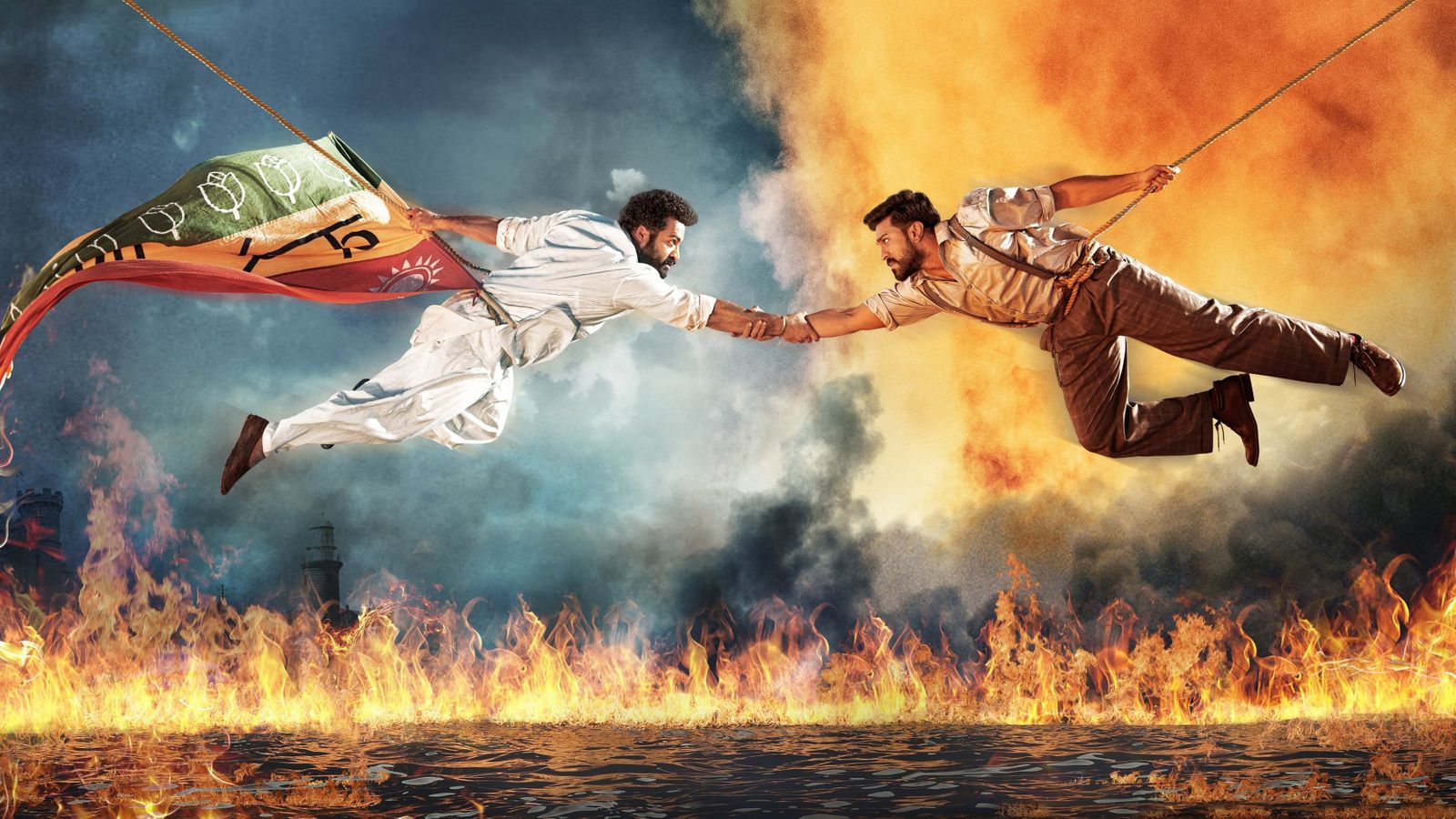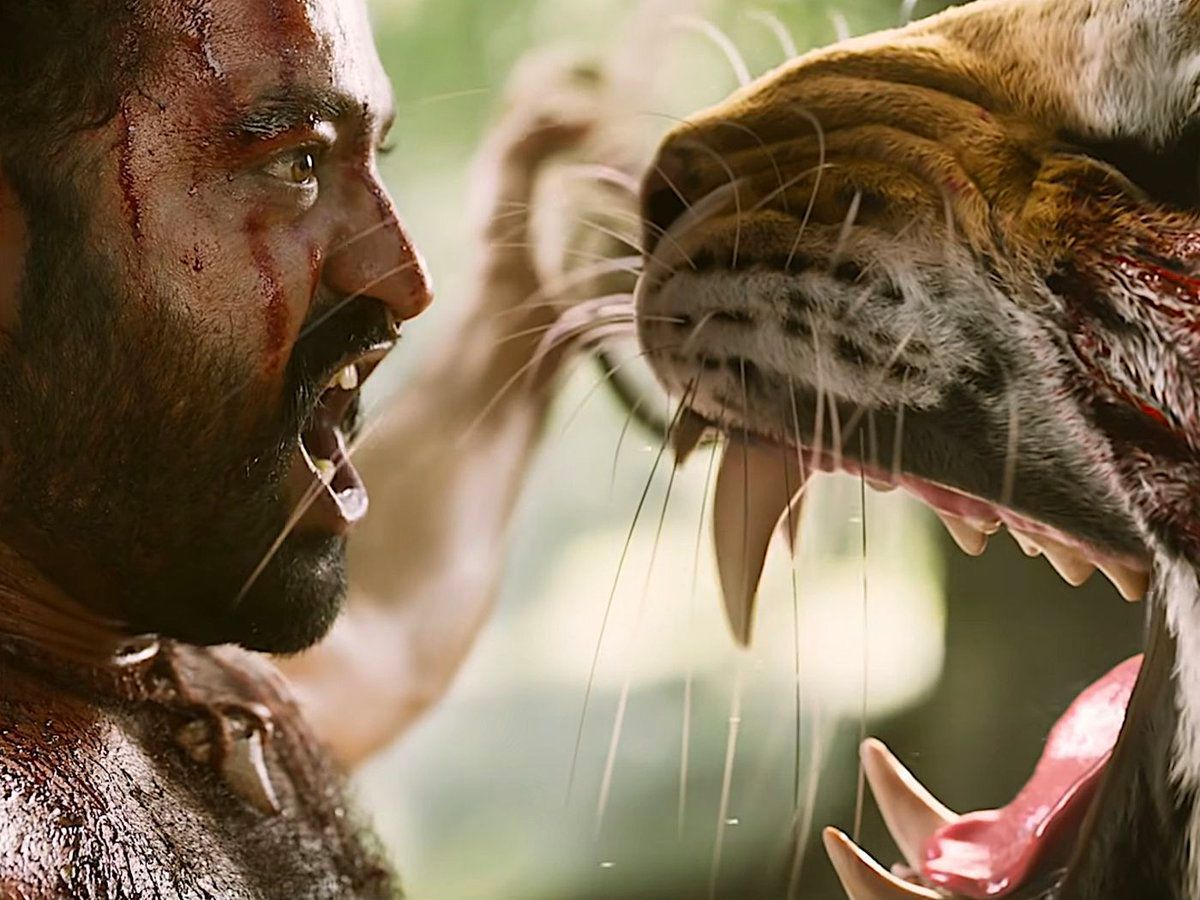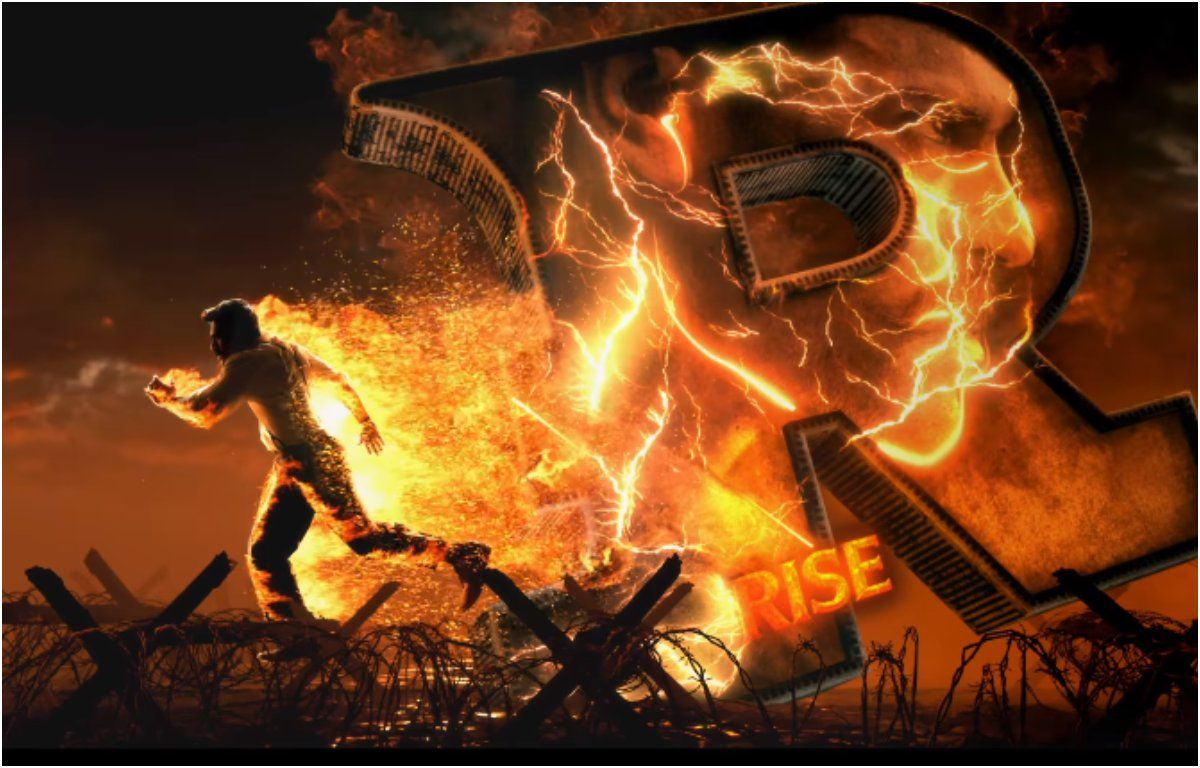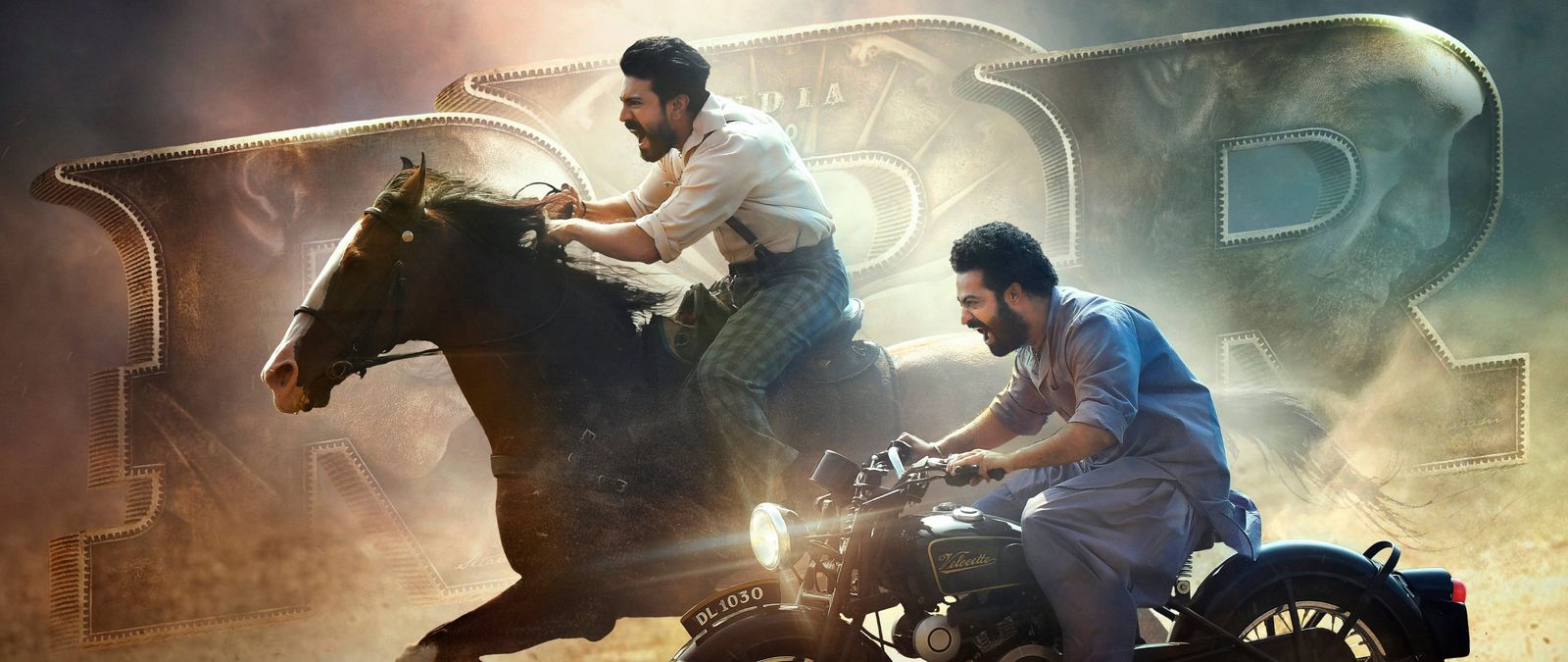RRR Movie Review: Ram Charan Is All Fire in This Period Film that Runs out Of Steam

Priorities come first. SS Rajamouli is an expert at elevating the commonplace to the exceptional. He intensifies the situation, draws the viewer into the scenario, and slows down the action. Everything was shown in the Baahubali movies. This is a unique talent that greatly enhances the attractiveness of watching movies on a huge screen. If you tell him that a man is climbing a tree, he will make sure that you are enthralled by the image of an incredible individual doing so in an extraordinary situation. Even though two liberation fighters (Komaram Bheem and Rama Raju) are recast as larger-than-life figures (remember the Amarendra monument at Baahubali's intermission? ), this idea—of great scope and scale—is at the core of RRR.
Rajamouli takes the mythologizing of them a step further by branding them with a natural aspect (fire for Ram, water for Bheem). This serves as a spark for his amazing imagination, which he uses to come up with some unforgettable set pieces based on the concepts of fire and water. Consider the initial bridge rescue that helps Bheem and Ram become buddies.
What better place for a helpless youngster to be caught than in water when a train is on fire? It's appropriate and almost anticipated that these two renowned guys would cross paths in this circumstance. He repeatedly uses the water-fire metaphor in the movie, to thrilling effect. For instance, when Ram appears in a burning horse-drawn carriage just before the intermission, there is clearly a reason for the fire that goes beyond aesthetic and theme—one that also considers Bheem's identity. These scenes serve as illustrations of the filmmaker's talent for creating elaborate set pieces and his capacity to put into practise concepts that on paper undoubtedly appear to be challenging.

Bheem and Ram, the two superheroes (let's just call them that), both have different goals to pursue in RRR. I appreciated that although one goal is specific (save a girl! ), the other is broad (arm a populace!). Given the possibility for dramatisation, Rajamouli may even be considered to be gentler to the girl-abduction story as he treats both of them with importance. The acquisition of a weapon, on the other hand, isn't exactly the most emotive concept out there, so he attempts to get over it with a flashback that is, sadly, hasty and superficial.
This movie's script was written by Vijayendra Prasad, who is already well-known for his love of mythology. It's impossible to resist the urge to reinterpret the Bheem in this movie as Hanuman if you give him a Ram and Sita. Despite originating from distinct epics, both Hanumaan and Bheem are powerful legendary figures. In this movie, NT Rama Rao Jr. gives Bheem even Hanumaan's devotion and naivete. Later on, he even acknowledges his simplicity and feels guilty of it before expressing a kind of devotion to Ram. Because of this, "Bhaiya" changes to "Anna."
For this reason, he even mentions Lanka in one scene and declares that he will reunite Ram and Sita even if the entire location has to be set on fire. For the most part, Ram is an expert with a gun, but as he grows his hair out and starts to feel like himself, it's as if Ram from the Ramayana has somehow snuck into this world. Everything is Vijayendra Prasad, and it is beautiful to see.

The screen presence of Ram Charan particularly captured my attention. The actor portrays the character as a stoic, loyal policeman for the most part, yet his eyes convey so much struggle. By conveying exactly the perfect amount of obligation and emotion in his eyes, watch him sink the jagged ends of his whip into Bheem's torso. This performance is stunning in its dancing, combat, and iron resolve.
And what an amazing entrance he makes, as his character defends the British government by facing a wild mob on his own. It may be because Ram is portrayed as having such grit and steel that it is a little unsettling to watch him suddenly get involved in dance fights or play the upbeat friend eager to advance a friend's romance with a member of the enemy group. I was wondering whether he didn't have any other urgent responsibilities to complete.
The sympathetic British damsel in distress that Bheem falls in love with is the type of naive beauty we have seen time and time again—the kind of person who would be unaware of events around her even as she invites unfortunate victims into her palace and begs for quick pardon when they are humiliated or threatened with death. I don't think it's possible to say too much good about the other women in this movie either. If you blink too much, Shriya Saran can slip your mind. Alia Bhatt, on the other hand, is another meek woman who longs fervently for the return of her beloved. She is the kind to stand by themselves and gaze into the distance while anticipating the return of her ideal warrior. Devasenas, regrettably, has no place in this movie.

However, there are worse issues with RRR, such as forgettable antagonists. Compare it to Bhallaladeva's menacing presence, ambition, and physicality in Baahubali. Of course, the vague, wicked British empire is there here, but movies like these require evil personification. Additionally, Scott and Lady Scott come across more as caricatures than as intelligent, alive, evil humans. Thankfully, their English isn't as bad as we've come to anticipate in our movies, but they're still not very advanced.
Lady Scott practically bays for blood, and Scott seems curiously fascinated with the waste of bullets. The point is first clear, but it is then repeatedly hammered home, including at the very end. It resembles the 'load, aims, shoots' sequence in several ways.
And unlike Baahubali, where strong emotional ties were created throughout (Bhalla-Amarendra rivalry, Amarendra-Devasena romance, Amarendra-Kattappa relationship, Mahendra-Devasena bond, etc.) and were essential to infusing emotion and meaning into the spectacular set-pieces, this movie lacks such ties. Without Ram's brief and unoriginal flashback, the movie would have to heavily rely on the volatile Bheem-Ram bond, which is also mostly defined by unsurprising montages.
The attraction of RRR lies most in Rajamouli's skill in elevating the commonplace, particularly in the stunt setpieces, as this review stated at the outset. Two men collaborate, one sitting on the shoulders of the other, to launch a memorable offensive and escape in the second half. One enters a vicious mob and emerges with his catch. The other unleashes an entire jungle into a palace. As a side note, given the significance of ahimsa in our past and the widespread romanticization of violence surrounding the freedom movement, it's difficult not to feel a little alarmed.
In the face of stomping boots and dehumanisation, perhaps violence is instinctive and necessary even, but at a time in our country when violence is increasingly being championed and certain leaders are being methodically canceled, it’s hard not to be at least a bit discomfited by the choice to celebrate, at the end of the film, only those who championed violence.
It's difficult to resist growing frustrated as the three-hour film progresses and the number of British casualties rises, as arrows pierce and bombs light up the woodland, though, as you look for meaning and emotion to underlie all the technical grandeur. Yes, Rajamouli comes up with ever-more-ingenious ways to spice up the action (for instance, shooting arrows with connected grenades), but it becomes harder and harder to miss the fact that while your senses are tingling with monotonous pleasures, your soul is left untouched and yearns for more. But because we're talking about Rajamouli, I couldn't help but daydream about him making our epics in the future. Who knows, maybe Rama Raju was sort of a dress rehearsal.
Read More About Shamshera Movie Review
Read More About RA.ONE: Film Review
Read More About Bhool Bhulaiyaa 2 Review: Kartik Aaryan-Starrer Holds Its Ground Against the Original; Tabu Steals the Show
